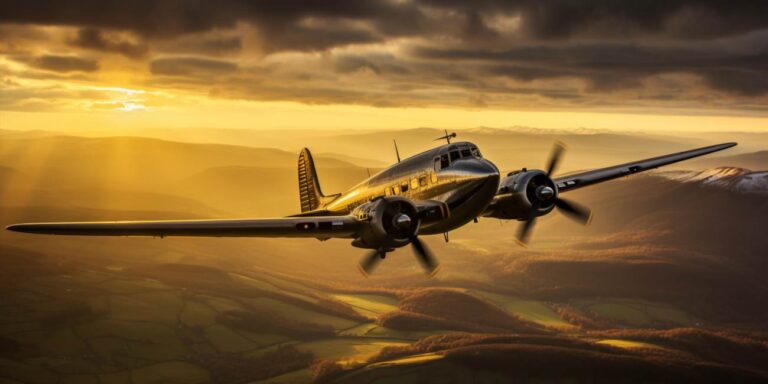The history of the B-57 dates back to its introduction during the Cold War era, where it served primarily as a tactical bomber for the United States Air Force (USAF). Originally designed for the Royal Air Force (RAF), the Americanized version, the B-57, featured modifications to meet the specific needs of the USAF.
One of the defining characteristics of the B-57 is its ability to operate at high altitudes and speeds, making it a formidable force in strategic bombing missions. The aircraft’s sleek design and powerful engines contributed to its success in penetrating enemy defenses and delivering precision strikes.
The B-57 earned its legendary status during the Vietnam War, where it played a crucial role in reconnaissance and bombing missions. Its ability to carry a diverse payload, including conventional and nuclear weapons, showcased its adaptability to evolving military requirements.
Noteworthy is the fact that the B-57 underwent several upgrades and variants throughout its service life, reflecting the commitment to keeping the aircraft technologically relevant. The introduction of electronic warfare capabilities further enhanced its role on the battlefield, solidifying its reputation as a versatile and effective platform.
Examining the specifications of the B-57, it becomes evident that its range, speed, and payload capacity contributed significantly to its success. The aircraft featured a maximum speed that set it apart from its counterparts, allowing it to execute surprise attacks and evade enemy defenses effectively.
The B-57‘s role expanded beyond conventional warfare, as it became an integral part of intelligence-gathering missions. Equipped with sophisticated sensors and cameras, the aircraft excelled in capturing crucial information behind enemy lines, contributing to the overall success of military strategies.
Summing up, the B-57 stands as a testament to innovation and adaptability in military aviation. Its storied history, marked by pivotal moments in conflicts around the world, cements its legacy as a legendary bomber that left an indelible mark on the evolution of aerial warfare.
The b-57 canberra: a british-built jet-powered tactical bomber
The B-57 Canberra is a remarkable British-built jet-powered tactical bomber that has left an indelible mark on aviation history. Developed in the early 1950s, the Canberra was initially designed and manufactured by the English Electric Company, serving as a vital asset during the Cold War era.
The Canberra stands out for its sleek and aerodynamic design, featuring a twin-engine configuration that significantly contributed to its operational success. With a maximum speed of 580 mph, it became a pioneer in the realm of high-speed jet bombers.
One of the most distinctive features of the B-57 is its versatility. Originally intended for strategic bombing, it quickly evolved into a multi-role aircraft, adept at performing tactical bombing, reconnaissance, and electronic warfare missions. This adaptability played a pivotal role in the longevity of the Canberra’s service with various air forces around the world.
The Canberra gained global recognition for its exceptional range, allowing it to cover vast distances without the need for refueling. This attribute made it a preferred choice for long-range missions, cementing its status as a strategic asset for nations deploying it in their air forces.
In terms of armament, the B-57 boasted a formidable payload capacity. Its bomb bay could accommodate a variety of ordnance, ranging from conventional bombs to nuclear weapons. This capability made it a potent force capable of delivering a diverse array of payloads with precision.
During its operational lifespan, the Canberra became a sought-after aircraft, not only for its performance but also for its reliability. Many variants were developed, each catering to specific mission requirements and technological advancements of its time.
A notable aspect of the B-57 Canberra story is its widespread international adoption. Beyond its British origins, the aircraft found homes in the air forces of several nations, including the United States, Australia, India, and others. This global embrace underscores the aircraft’s cross-cultural impact on military aviation.
The legacy of the B-57 Canberra endures, with enthusiasts and historians alike celebrating its role in shaping the tactical bomber landscape. Its contributions to strategic capabilities, adaptability, and international cooperation make it a standout in the annals of aviation history.
The b-57 in service with the united states air force
The American Air Force played a pivotal role in the Vietnam War, employing various bomber aircraft to execute missions ranging from strategic bombing to close air support. Among these, the B-57 emerged as a versatile asset for the United States Air Force.
Originally derived from the English Electric Canberra, the B-57 became an integral part of the USAF’s aerial arsenal during the Vietnam War. Its adaptability allowed it to serve in diverse capacities, including reconnaissance, interdiction, and ground-attack roles. This made it a valuable asset for the demanding conditions of the conflict.
One of the noteworthy contributions of the B-57 was its effectiveness in providing close air support to ground forces. The aircraft’s ability to deliver precision strikes against enemy positions endeared it to troops on the ground, fostering a sense of reliance on its capabilities.
Equipped with powerful jet engines, the B-57 exhibited impressive speed and agility, enabling it to navigate the challenging terrains of Vietnam with relative ease. Its capacity to carry a significant payload made it a formidable force in disrupting enemy movements and fortifications.
In the context of the Vietnam War, where unconventional warfare and guerilla tactics were prevalent, the B-57 demonstrated its adaptability. Operating in tandem with other aircraft and ground forces, it contributed to the overall air superiority of the American Air Force in the region.
The strategic importance of the B-57 extended beyond its role as a bomber. Its reconnaissance capabilities were instrumental in gathering crucial intelligence, aiding in mission planning and execution. This dual-role versatility added a layer of strategic depth to the aircraft’s contribution to the Vietnam War.
As the conflict progressed, the B-57 underwent modifications to enhance its performance and survivability. These upgrades reflected the adaptability of the aircraft and its responsiveness to the evolving nature of the war.
B-57 models and variants: the tb-57 still in use today
The B-57 aircraft series has a fascinating history, with various models and variants serving different purposes over the years. Among them, the TB-57 stands out as a resilient component still actively contributing to modern aviation.
The TB-57, a training variant of the B-57, remains in use today for specialized purposes. Originally designed for training purposes, this aircraft evolved to take on diverse roles, showcasing its adaptability. The nasa research aircraft fleet includes modified TB-57s, employed for scientific endeavors and data collection.
Particularly noteworthy is the role of the TB-57 in NASA’s ambitious research programs. These modified aircraft play a pivotal role in advancing aeronautical and aerospace research. Equipped with state-of-the-art instruments, they soar into the skies, gathering crucial data for scientific analysis.
One of the exceptional applications of the TB-57 is its involvement as a hurricane hunter aircraft. Tasked with penetrating the heart of storms, these aircraft provide invaluable insights into the dynamics of hurricanes. The combination of advanced technology and the aircraft’s robust design makes it a reliable asset for hurricane research.
As the nasa research aircraft continue to push the boundaries of scientific exploration, the TB-57 proves its worth as a versatile and enduring platform. Its ability to operate at high altitudes and withstand challenging conditions makes it an ideal choice for missions that demand precision and reliability.
Shifting focus from active service to retired glory, the B-57 series, including the TB-57, played a crucial role as retired bombers. These aircraft, having served their primary military functions, were repurposed or retired with honor. The legacy of the B-57 series, with its diverse roles and contributions, remains etched in the annals of aviation history.
Let’s delve into the unique characteristics of the TB-57, showcasing its evolution from a training aircraft to a cutting-edge tool for scientific exploration. The table below summarizes key information about the TB-57 and its various roles:
| Model | Role | Notable Features |
| TB-57 | Training | Originally designed for training purposes |
| TB-57 (Modified) | NASA Research Aircraft | Equipped with advanced instruments for scientific research |
| TB-57 (Hurricane Hunter) | Hurricane Research | Capable of penetrating hurricanes for data collection |
From the training grounds to the forefront of scientific discovery, the TB-57 continues to soar, embodying the spirit of innovation and adaptability.
See also:
- How many ships and aircraft were used by japan in the attack on pearl harbor
- What is the fastest aircraft: comparing top speeds of jets, rockets and experimental planes
- Different kinds of aircraft: a complete guide
- Embraer emb 314 super tucano – the brazilian turboprop light attack aircraft
- What was the first mig aircraft: a history of soviet fighter jets





